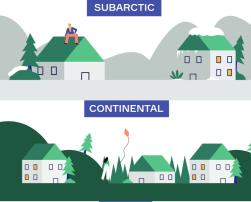
Synikia project: presentation of the project and case studies
Do you want to know more about syn.ikia project? The following leaflet clearly explains the project, such as its consortium, its mission, and its main objectives. Among those the leaflet illustrates the 4 demo cases chosen to represent different climatic zones for the study.
Editorial team

RenoBooster project is boosting the green renovation of private housing in Vienna
The H2020 RenoBooster project aims to increase the number of green renovations of private housing, thereby contributing to the decarbonisation of the city and to reaching the ambitious target to become climate neutral by 2040.
Editorial team

Smart Readiness Indicator (SRI) - Focus on lighting systems
The Smart Readiness Indicator (SRI) is a common EU scheme for rating the smart readiness of buildings. Lighting is one of the nine technical domains addressed by the SRI. Switching to more energy-efficient lighting products will save consumers an average of €30 per year and could preventing roughly 7 million tonnes of CO2 emissions in Europe per year.
Editorial team

EU Buildings Climate Tracker: A methodology for the decarbonisation indicators of buildings
The EU Buildings Climate Tracker is a benchmark and assessment tool checking on the status of the EU building stock and its progress towards climate neutrality by 2050. The paper gives more details regarding the methodology and results.
Editorial team
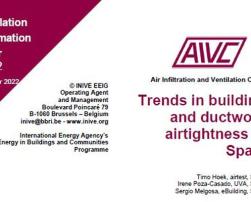
AIVC's Ventilation Information Paper #45.2: Trends in building and ductwork airtightness in Spain
AIVC's Ventilation Information Paper #45.2: Trends in building and ductwork airtightness in Spain summarizes current knowledge on trends in building and ductwork airtightness in Spain.
Maria Kapsalaki
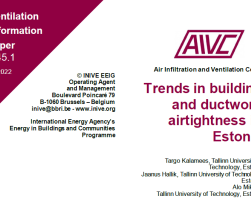
AIVC's Ventilation Information Paper #45.1: Trends in building and ductwork airtightness in Estonia
AIVC's Ventilation Information Paper #45.1: Trends in building and ductwork airtightness in Estonia, summarizes current knowledge on trends in building and ductwork airtightness in Estonia.
Maria Kapsalaki
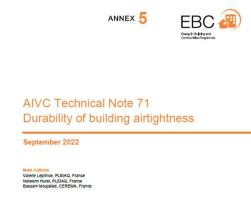
AIVC's Technical Note 71: Durability of building airtightness
This report presents a comprehensive review of studies that deal with building airtightness durability.
Maria Kapsalaki
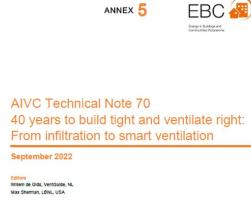
AIVC's Technical Note: 40 years to build tight and ventilate right, from infiltration to smart ventilation
The AIVC (Air infiltration and Ventilation Centre) is the International Energy Agency’s information centre on energy efficient ventilation. In commemoration of the 40th anniversary of its creation, 2 overview publications were published presenting the history and main target of the organisation.
Maria Kapsalaki
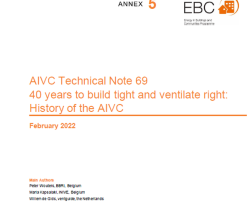
AIVC's Technical Note 69: 40 years to build tight and ventilate right: History of the AIVC
The AIVC (Air infiltration and Ventilation Centre) is the International Energy Agency’s information centre on energy efficient ventilation. As the AIVC was created in 1979, the 40th anniversary of the AIVC was celebrated in October 2019 at the 40th AIVC conference in Ghent.
Maria Kapsalaki

The future of cold climate air source heat pumps
As the electrification is growing, cold climate air source heat pumps are starting to substitute thermal loads which are served by fossil-fuels. It is therefore important to assess their implementation and performance in the residential sector.
Editorial team